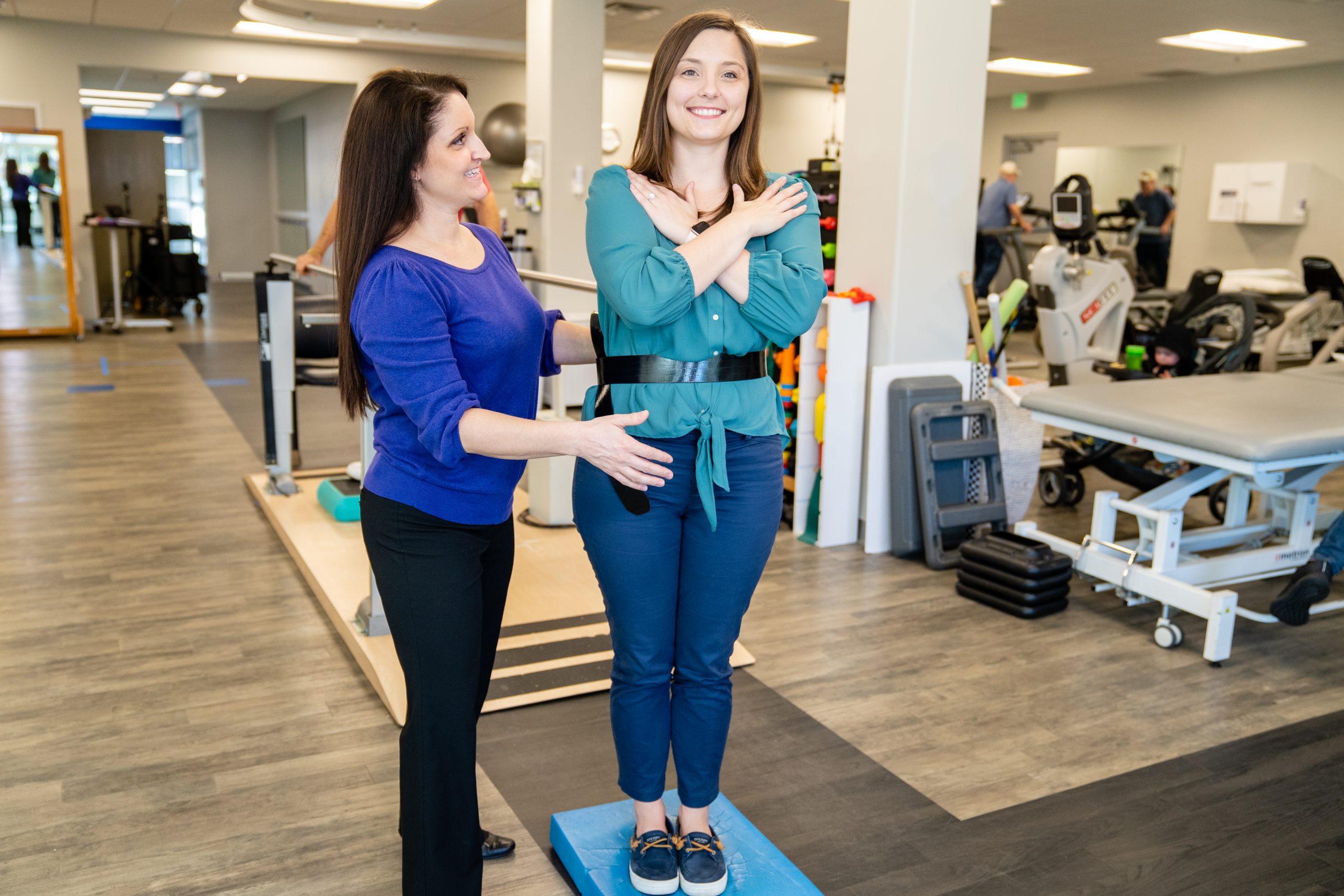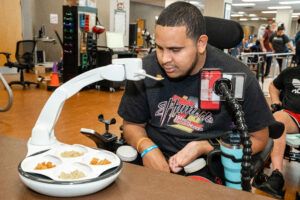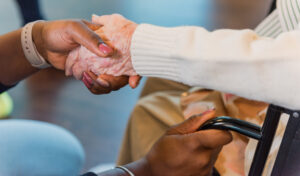Our Osceola outpatient clinic specialist shares why physical therapy is important for Scoliosis

Back to physical health resource hub
When most people think of treatment methods for scoliosis, they picture a large brace covering the entire trunk, or even surgery to straighten the spine again. However (depending on the severity of the curves), there is another option: physical therapy. Scoliosis is when the spine abnormally curves to the side which may cause pain, limited movement and function, difficulty breathing and a poor body-image.
Usually scoliosis is diagnosed after performing an x-ray in which your doctor can see the direction of the curve and how large it is. They may also notice the lateral curvature just by looking at the spine or checking for a “rib hump,” which is when the scoliosis causes a rotation of the spine and makes the ribs on one side of your back show more when you bend forward. Most of the time the cause of this deformity is unknown, but that does not mean it can’t be treated.
While a quick google search can lead you to some exercises you can do at home for this, you should see a physical therapist instead in order to have a treatment plan customized to you and your curvature since there are different types of scoliosis based on the direction of the curve. Some people have S-curves which is when the lower and middle spine curve in opposite directions, or C-curves which is when the lower and middle spine curve in the same direction.
The initial visit to a physical therapist for treatment of scoliosis will first involve an interview asking you about your medical history, pain, function and anything else you’ve done to treat your scoliosis. The therapist will also take measurements related to posture, strength, balance and the amount of movement of the spine, and then create a treatment plan and exercises specific to your needs. These exercises improve alignment of the spine, breathing, awareness of posture, strengthen the muscles around the spine and decrease back pain that may be caused by the scoliosis.
While the exercises aren’t guaranteed to decrease or reverse the curving of the spine, the ultimate goal is to help halt the curvature from becoming worse and reduce the need for a brace or surgery in the future. For this reason it is important to continue performing these exercises regularly once given to you by your physical therapist. Other tools physical therapists may use to help treat pain related to scoliosis is heat, ice, massage, electrical stimulation and kinesiology taping.
If left untreated, scoliosis can worsen and get to the point where a brace or surgery is needed. However with early physical therapy intervention, you can help stop the condition from progressing and be able to enjoy your usual work and recreational activities and have a better quality of life. You can learn more about our Osceola clinic in the Orlando area and our team that treats Scoliosis.


